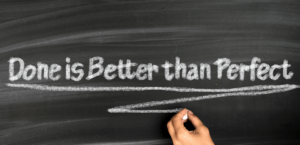Reduce, reuse and recycle. For a long time I was only focusing on the ‘recycle’ part but this earth love triangle doesn’t work without the first two. It isn’t enough to just recycle if you are not purchasing recycled products, first reducing your trash output and then reusing as much as possible before sending your trash to finally be put back into the system by recycling. My family has been able to reduce our waste to about 1 white trash bag a week. I wish we could do more but there is packaging that is not recyclable, diapers and food products that we are not able to compost, yet. But we have substantially reduced our waste in the past 2 years.
So much of the waste that we create is centered around food. We are an on the go society. My family is no exception. With three kids, a husband that works outside of the home and my own business we have the need for quick, convenience foods just like anyone else. But, we have made changes to our eating to help reduce our earth impact.
1 – We rarely (1-2 a year) buy prepackaged snack foods. They are a huge packaging waste. We have lots of little plastic containers that I decant into for on the go snacking.
2 – Most of the food we eat, I make. Making food takes time but so does buying and preparing packaged foods. Making food gives me time to express my love for my family in a very physical way. And, there is time for lots of family lessons during the food making process. Not the least of which is patience.
3 – We try to reuse many of the containers that come into the house and the ones that we can’t, we recycle. We send our recycling to friends and family that can handle the plastic numbers that our county doesn’t recycle.
4 – No bottled water, soda bottles or other small drinks. I was buying mostly concentrated juice if any at all but that need has recently increased for us.
5 – COMPOST!!! Throwing food in the trash is just plain silly. Even if you don’t use your compost you can take the time to process it. Doing compost takes a minimal amount of time and space. I also know that cities provide community composting if you happen to live in an apartment. I like this The Green Cone composter (we don’t have it, it is on our wish list) http://www.greencone.com/
6 – Say no to plastic and paper disposable products. We use fabric rags instead of paper towels, fabric napkins instead of paper and have on hand recycled/recyclable plasticware for gatherings. Check our this site for great plasticware http://www.preserveproducts.com/
7 – Take reusable bags to the grocery store. No need to recycle silly plastic bags if you don’t get them in the first place! If items are little, I refuse the bag and put them in my purse. Otherwise, I try and keep my reusable bags in the store for all shopping needs.
8 – Buy pasture raised meats. I think that if we made this switch alone we would substantially reduce the middle east’s hold on our oil needs. This topic alone one could write a book on (some have!) Consider it your patriotic duty 🙂
9 – Eat less cereal. Cereal has lots of packaging and processing. I try and eat eggs, oatmeal, pancakes, muffins, etc for breakfast. All are yummy, filling and earth friendly especially if you add local maple syrup 🙂
Look at that! 9 easy steps you can take to reduce your environmental impact in just the kitchen alone. Do you have any other ideas?














2 Responses to “Closing the Gap”
In #6 you talk about not using paper products- towels, napkins, etc. I do that too, but I get the response from people that I then waste more water and detergent and electricity because I have to wash them. What do you think about this? I haven’t done any research to see which has the greater negative environmental impact. Have you?
Here’s #10- (which I know you do) and reuse and recycle step. Reusing the back side of paper, envelops or even sometimes junk mail for notes and lists. Then of course recycle it when you have used BOTH sides.
About paper vs. cloth – I have heard the same comments and there was a study done recently. I can’t recall if it was in Consumer Reports or World Ark. In in case they recommended linen products over cotton because the water use difference was substantial. But in either case they did show that cloth used less water over all than paper.